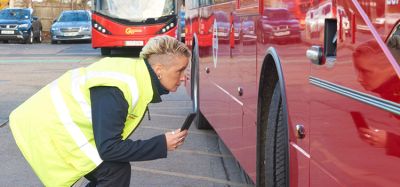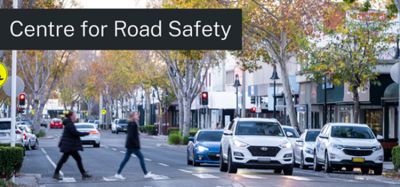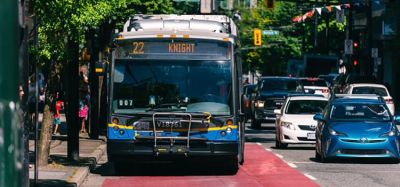Testing the impact of shared mobility services in Chicago
- Like
- Digg
- Del
- Tumblr
- VKontakte
- Buffer
- Love This
- Odnoklassniki
- Meneame
- Blogger
- Amazon
- Yahoo Mail
- Gmail
- AOL
- Newsvine
- HackerNews
- Evernote
- MySpace
- Mail.ru
- Viadeo
- Line
- Comments
- Yummly
- SMS
- Viber
- Telegram
- Subscribe
- Skype
- Facebook Messenger
- Kakao
- LiveJournal
- Yammer
- Edgar
- Fintel
- Mix
- Instapaper
- Copy Link
Posted: 21 January 2019 | Iliya Markov - Bestmile, Marco Laumanns - Bestmile | No comments yet
Bestmile completed a research case study in Chicago, Illinois, U.S., comparing shared and unshared service performance, and their ability to reduce kilometres driven and increase fleet efficiency.


New mobility services will change the world
Shared mobility services – autonomous as well as human-driven – promise to transform transportation and urban living. Moving more people with fewer vehicles and fewer kilometres driven can reduce congestion and pollution, enable new levels of productivity otherwise lost in long commutes, and make it possible to re-imagine cities around people instead of cars.
Solving the ‘how?’
Those are some of the big-picture benefits of new mobility services predicted by government officials, industry leaders and journalists. For transportation planners and service providers, however, another question needs to be answered. How?
How might these new services work and how will they accomplish these lofty goals? More specifically, how will shared, on-demand services work in a specific city, with a specific population and travel patterns, and a specific transportation infrastructure? Even more locally-unique questions need to be answered: how many vehicles will be needed; how and where should they be deployed; will the economics be positive?
Exploring service designs in Chicago
To test the ability of shared services to improve fleet efficiency in a specific city, a variety of service designs in the city of Chicago were studied using publicly available taxi ride data – running the data through dispatching and ride-matching algorithms of Bestmile’s mobility services management platform. The shared services were simulated to see how they perform compared to the unshared-taxi service. The study considered a set of operator and passenger key performance indicators (KPIs) for fleet efficiency and service levels. The outputs of the experiment were:
- Acceptance rate – the percentage of ride requests the fleet accepts
- Excess ride time (ERT) – the added ride time for a shared ride compared to a direct ride
- Pick-up time deviation – the difference between the desired and the actual pick-up time – the maximum pick-up time deviation is 10 minutes for all scenarios
- Total distance driven by the fleet
- Effective transportation distance ratio – the number of effective passenger-kilometres for each vehicle-kilometre driven
- Average vehicle occupancy.
For the sake of the experiment, we selected a single day, (1 March 2017), when there were more than 31,000 taxi trips in Chicago. Because no two service areas are alike, even within the same city, the study used different fleet sizes, with and without ride-sharing, and compares the resulting KPIs.
Lincoln Park micro-transit: The first service design studied was an on-demand mobility service within the adjacent community areas of Near North Side and Lincoln Park located in north-central Chicago. These neighbourhoods contain a mixture of business and residential districts as well as entertainment and tourist attractions such as the Lincoln Park Zoo, the Magnificent Mile, and the Navy Pier. On 1 March 2017, 4,458 rides with an average direct ride time of five minutes were reported. For the experiment, the maximum excess ride time is set to 50 per cent of the direct ride time plus two minutes.
O’Hare shuttle: The second service area covers the demands to and from Chicago’s main airport, O’Hare International. This service area is characterised by strong directionality of the travel demand, a strong advantage for ride-sharing, as well as a high number of vehicles needed. The service area averages 2,633 rides per day. The pick-up time deviation is modified, with the maximum excess ride time set to 50 per cent plus 10 minutes. The longer ride time threshold is used in view of the much longer average ride time of 40 minutes here.
City ride-sharing: The third scenario features a ride-sharing service for a uniform sample of the entire city of Chicago, using 50 per cent of the 31,254 daily taxi trips. In theory this should significantly reduce the number of vehicles used and improve fleet efficiency thanks to synergy effects arising from a denser coverage of the city. For this service, both maximum excess ride time limits were tested and compared.
Results
The study used different samples for different fleet sizes, with and without ride-sharing and the resulting KPIs are compared. This demonstrates the impact of fleet size and ride-sharing on ride acceptance rates, excess ride times, pick-up time deviations and fleet-efficiency indicators.
Lincoln Park micro-transit
The Lincoln Park scenario compares 20 and 60-vehicle shared on-demand micro-transit services with unshared-taxi services for the same area.
|
|
20 taxis |
20 shared six-person vehicles |
|
Acceptance rate |
74 per cent |
88 per cent |
|
Excess ride time |
0.0 min |
1.9 min |
|
Pick-up time deviation |
3.5 min |
5.6 min |
|
Total distance driven |
10,500km |
8,400km |
|
Effective transportation distance ratio |
0.6 |
1.0 |
|
Average occupancy |
1.0 passenger |
1.7 passengers |
|
|
60 taxis |
60 shared six-person vehicles |
|
Acceptance rate |
100 per cent |
100 per cent |
|
Excess ride time |
0.0 min |
1.9 min |
|
Pick-up time deviation |
3.9 min |
4.6 min |
|
Total distance driven |
14,000km |
8,700km |
|
Effective transportation distance ratio |
0.7 |
1.1 |
|
Average occupancy |
1.0 passenger |
1.8 passengers |
The shared service has a significantly higher acceptance rate with a 20-vehicle fleet, while shared and unshared services can accept all ride requests with a fleet of 60. The numbers also show the inherent trade-off between passenger and fleet-related KPIs. The shared service has higher vehicle occupancy and carries more passengers per kilometre, while travelling a much shorter total distance – reducing the total distance driven by 20-30 per cent. This comes with excess ride times and higher pick-up time deviations. Adding more vehicles to the shared service helps boost the acceptance rate without significantly impacting fleet efficiency and passenger convenience.
O’Hare shuttle
The airport shuttle scenario compares shared and unshared services with 60 and 90 vehicles to and from the city and the airport.
|
|
60 taxis |
60 shared six-person vehicles |
|
Acceptance rate |
44 per cent |
85 per cent |
|
Excess ride time |
0.0 min |
11.0 min |
|
Pick-up time deviation |
2.8 min |
5.0 min |
|
Total distance driven |
39,900km |
17,000km |
|
Effective transportation distance ratio |
0.8 |
3.7 |
|
Average occupancy |
1.0 passenger |
4.6 passengers |
|
|
90 taxis |
90 shared six-person vehicles |
|
Acceptance rate |
59 per cent |
89 per cent |
|
Excess ride time |
0.0 min |
11.3 min |
|
Pick-up time deviation |
2.8 min |
4.9 min |
|
Total distance driven |
51,100km |
17,500km |
|
Effective transportation distance ratio |
0.9 |
3.8 |
|
Average occupancy |
1.0 passenger |
4.6 passengers |
The shared airport shuttle service delivers significantly higher ride acceptance rates with consistent KPIs for different fleet sizes. What’s most noticeable in this scenario is that a 60-vehicle shared fleet travels approximately the same distance and carries the same average number of passengers per vehicle as a 90-vehicle shared fleet. This shows that simply increasing the fleet size does not result in significantly higher acceptance rates. With an average of almost five passengers per vehicle, deadheading – where a vehicle is moving empty – is minimal.
Also visible in this example is the impact of ride-sharing on the ride times for longer-distance services. Excess ride times of 10-12 minutes are common for both fleet sizes due to the less restrictive maximum excess ride time constraint. This again highlights the key trade-off between passenger and fleet-efficiency KPIs when it comes to shared vs. unshared services. Service providers can operate a much more efficient fleet with a shared service, but this comes at the expense of some passenger inconvenience, and every service provider must determine the best balance for a specific service area.
City ride-sharing
For the city ride-sharing service with 60 and 100 vehicles, two different maximum excess ride time rules were tested as acceptance criteria – a tight maximum excess ride time equal to 50 per cent of the direct ride time plus two minutes, and a relaxed threshold of 50 per cent of direct ride time plus 10 minutes. Because excess ride time tolerances rise with travel distance, and because this citywide area includes both short and long rides, it is instructive to test both rules and to compare their impact on the KPIs.
|
|
60 taxis |
60 shared six-person vehicles |
|
|
|
|
Tight max ERT |
Relaxed max ERT |
|
Acceptance rate |
41 per cent |
62 per cent |
67 per cent |
|
Excess ride time |
0.0 min |
3.1 min |
6.5 min |
|
Pick-up time deviation |
5.7 min |
5.6 min |
5.7 min |
|
Total distance driven |
41,000km |
35,000km |
33,900km |
|
Effective transportation distance ratio |
0.7 |
1.5 |
1.7 |
|
Average occupancy |
1.0 passenger |
2.4 passengers |
2.9 passengers |
|
|
100 taxis |
100 shared six-person vehicles |
|
|
|
|
Tight max ERT |
Relaxed max ERT |
|
Acceptance rate |
66 per cent |
84 per cent |
86 per cent |
|
Excess ride time |
0.0 min |
3.1 min |
6.5 min |
|
Pick-up time deviation |
6.1 min |
5.7 min |
5.5 min |
|
Total distance driven |
61,200km |
46,100km |
41,600km |
|
Effective transportation distance ratio |
0.7 |
1.5 |
1.7 |
|
Average occupancy |
1.0 passenger |
2.3 passengers |
2.9 passengers |
Ride-sharing results in significantly higher acceptance rates, effective vehicle transportation distance ratios and vehicle occupancies. The acceptance rate for the fleet of 60 unshared taxis is very low – under 50 per cent. The unshared services have the lowest effective transportation distance ratios as well. The differences in performance of the shared fleets with tight and relaxed maximum excess ride time are small, apart from doubling the actual excess ride times. Not surprisingly, relaxing the maximum excess ride time boosts ride acceptance, while at the same time reducing the kilometres driven and increasing fleet efficiency and vehicle occupancy, both for the 60 and 100-vehicle fleets. Still, even under the tight maximum excess ride time, fleet efficiency and utilisation, compared to the unshared service, are substantially improved.
Further scaling both the number of ride requests and the fleet size shows that the full set of 31,254 rides can be handled with a fleet of 200 vehicles for an acceptance rate of roughly 90 per cent. In other words, the required fleet size grows more slowly than the number of ride requests, which highlights the synergy effect of a denser vehicle coverage of the city. In reality, these trips were performed by 2,711 taxis. The ability to cut this number by a factor of 10 shows the clear-cut advantage of shared services
Conclusion
This study shows how shared mobility services have the potential to dramatically reduce the number of vehicles on the road and the number of kilometres driven compared to unshared services. One can assume that the traffic and corresponding emissions can also be dramatically reduced with widespread shared services. As seen through the examples of three services designed for the city of Chicago, simulating shared services can give planners visibility into critical variables surrounding fleet efficiency and passenger-related KPIs for specific service areas. Demonstrating these impacts can also give operators much-needed confidence about how new services might perform before their actual launch.
Related topics
Fleet Management & Maintenance, On-Demand Transport, Passenger Experience
Related cities
Chicago, United States of America
Related organisations
Bestmile
Related people
Iliya Markov, Marco Laumanns








